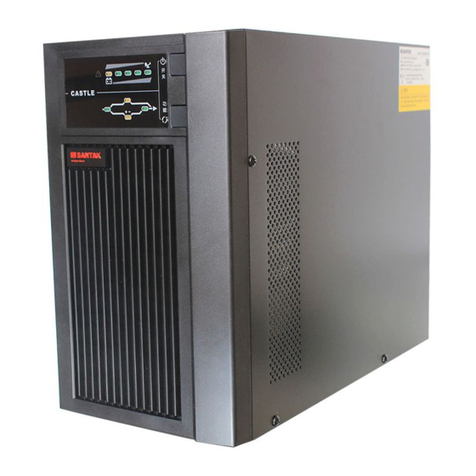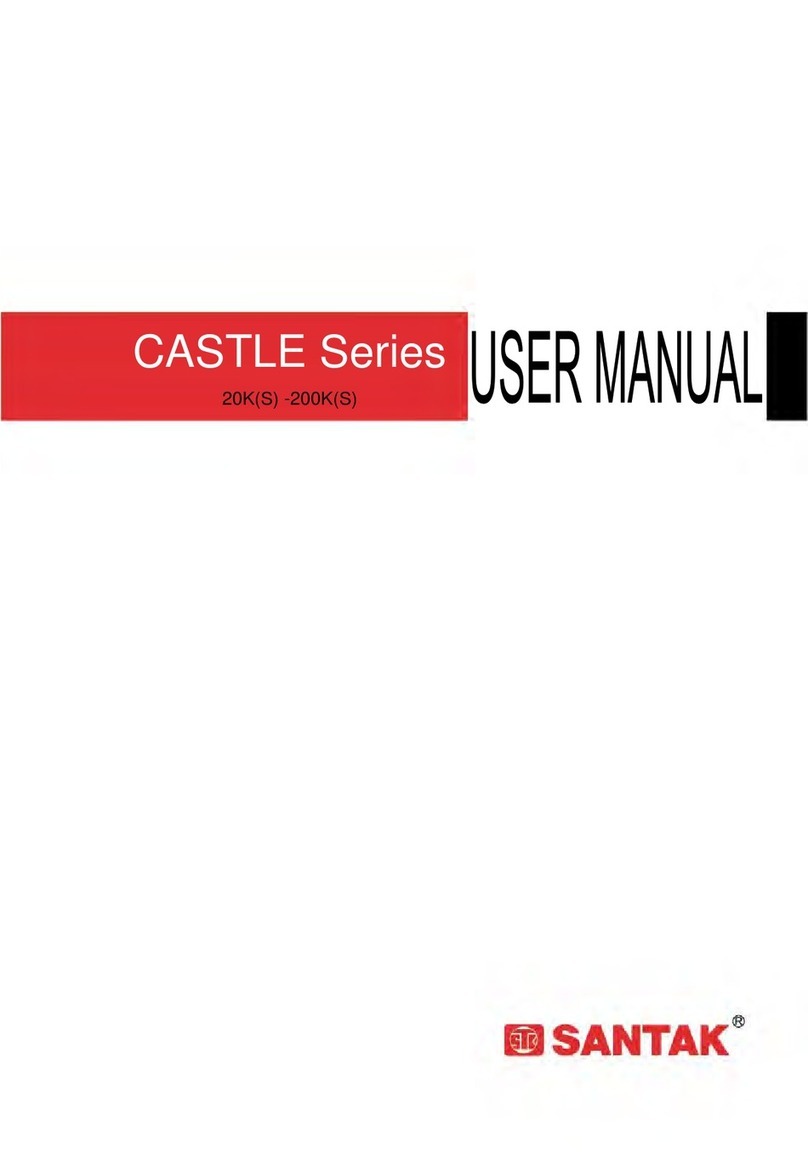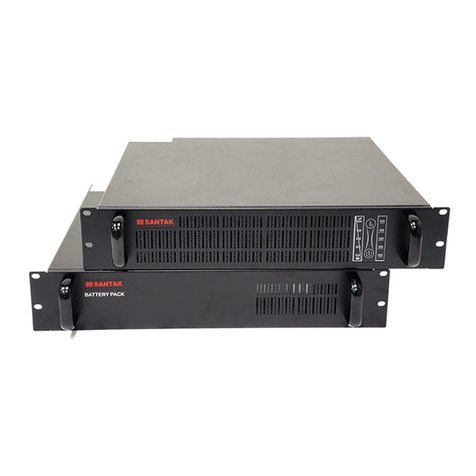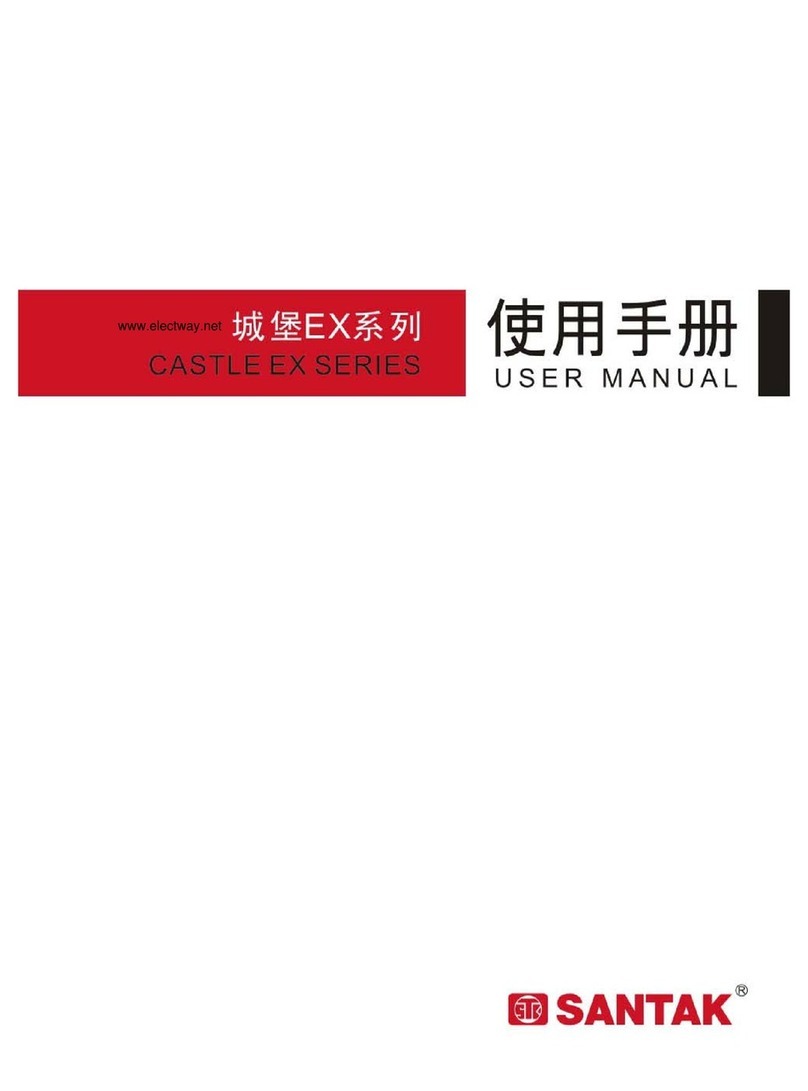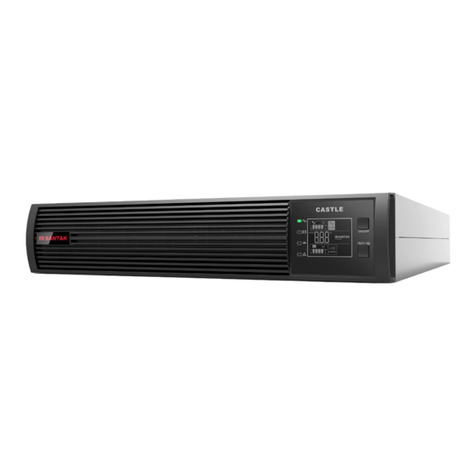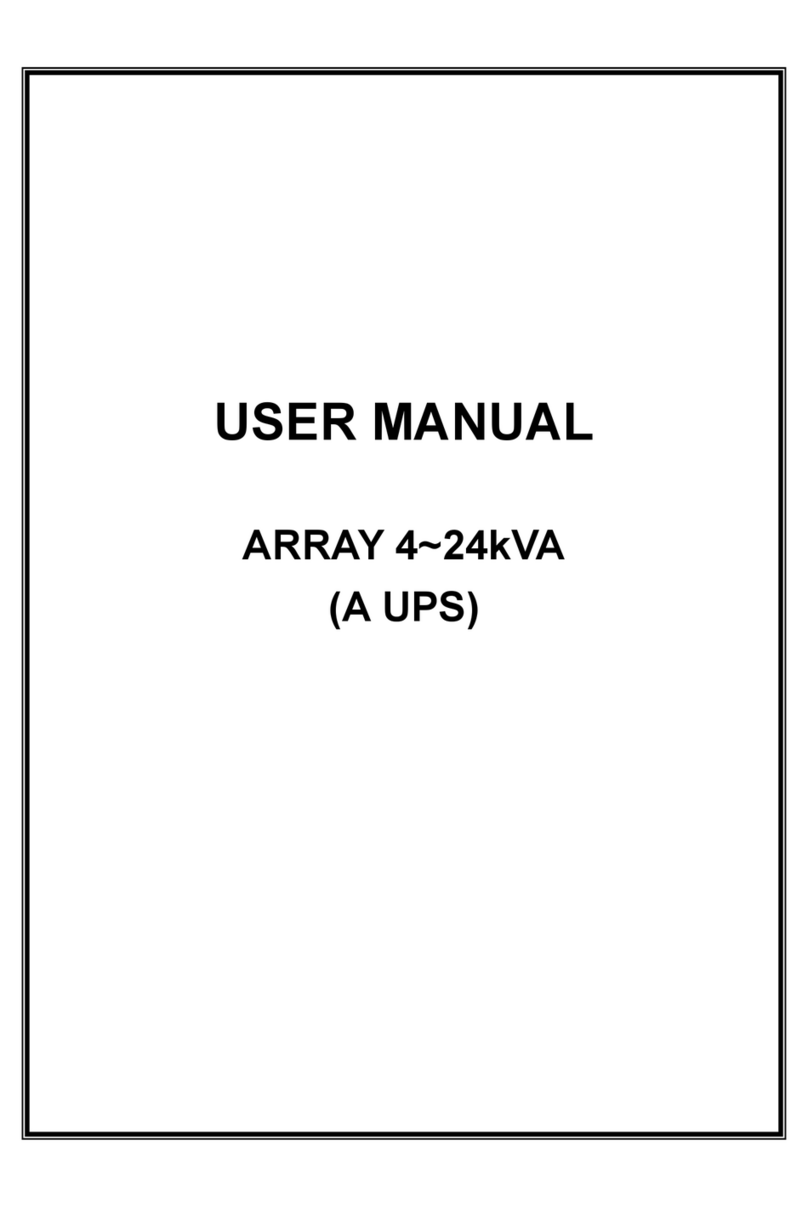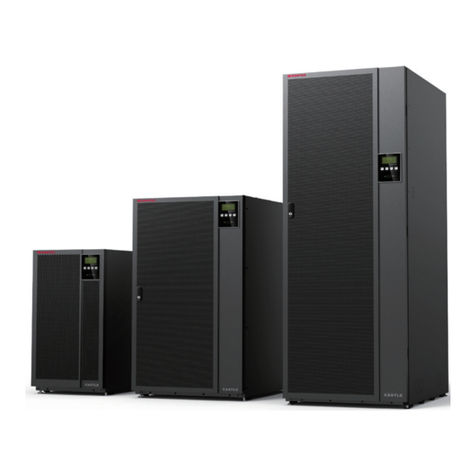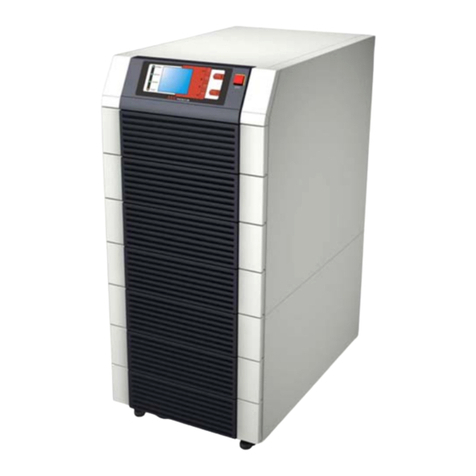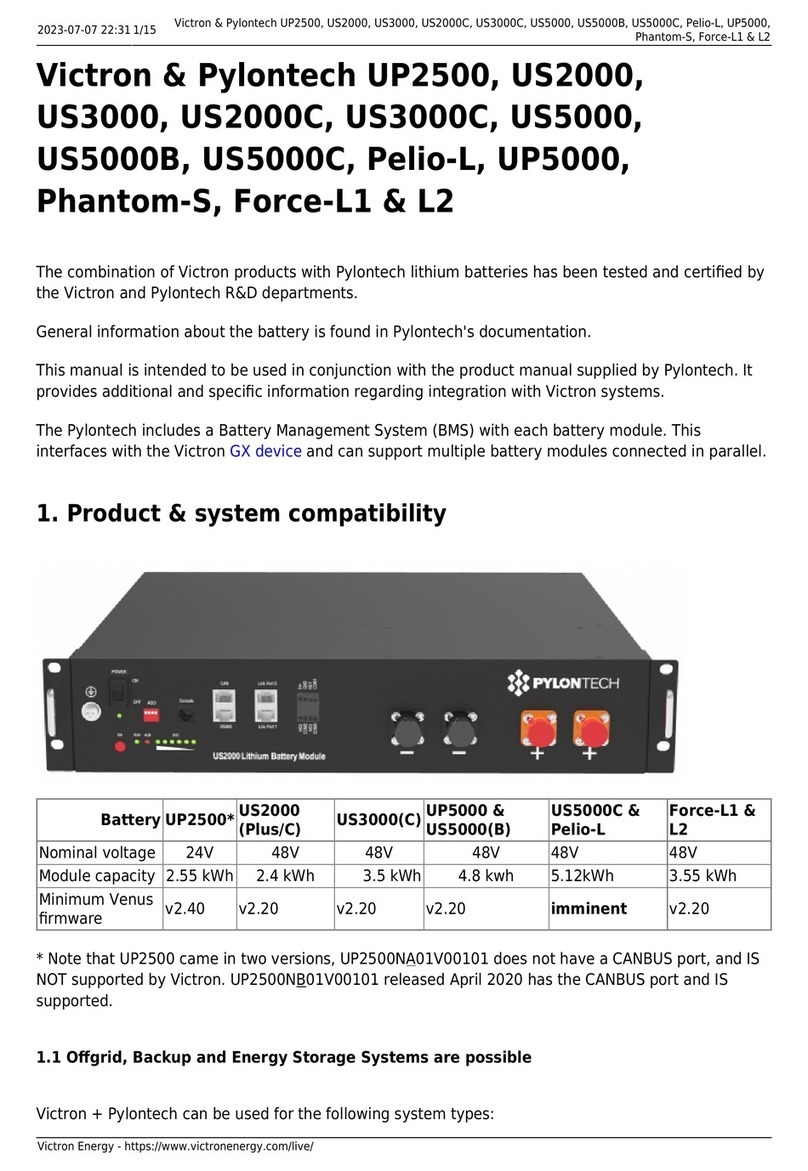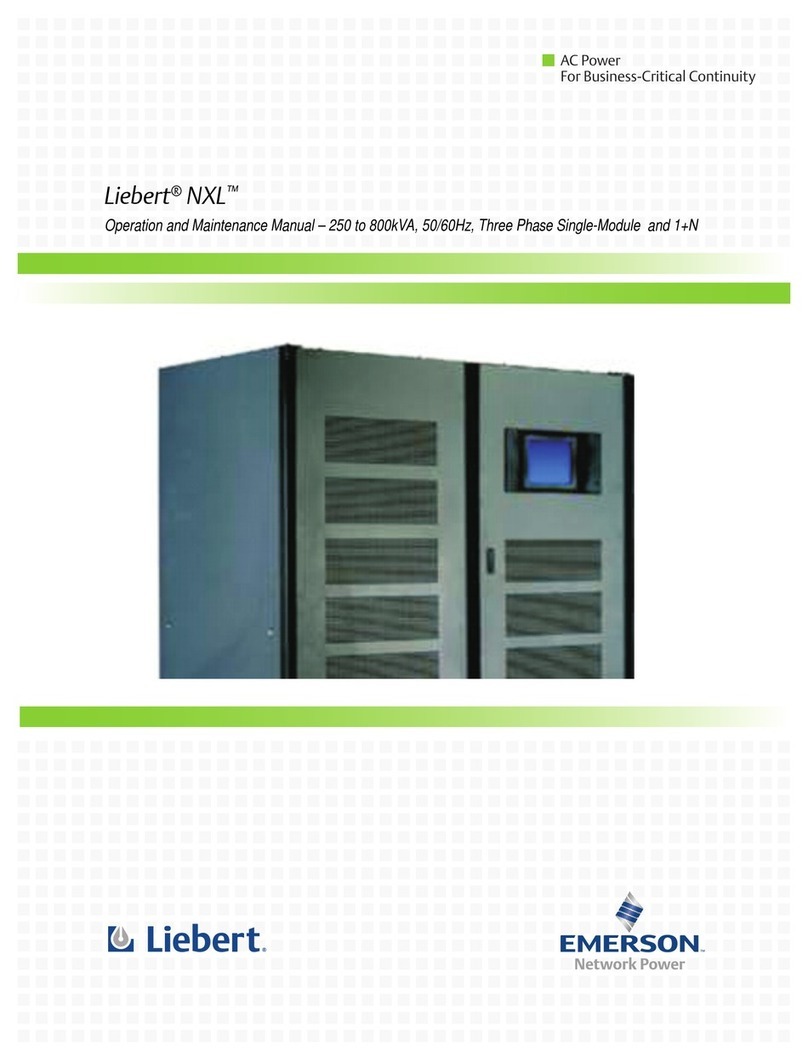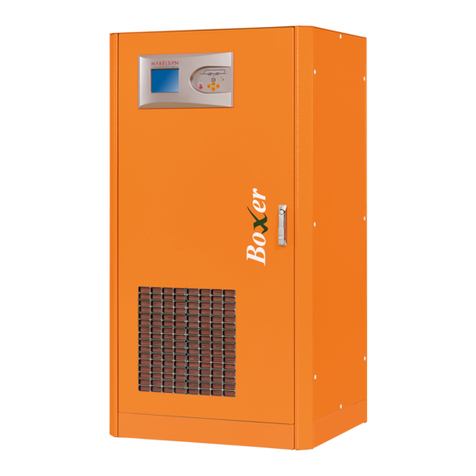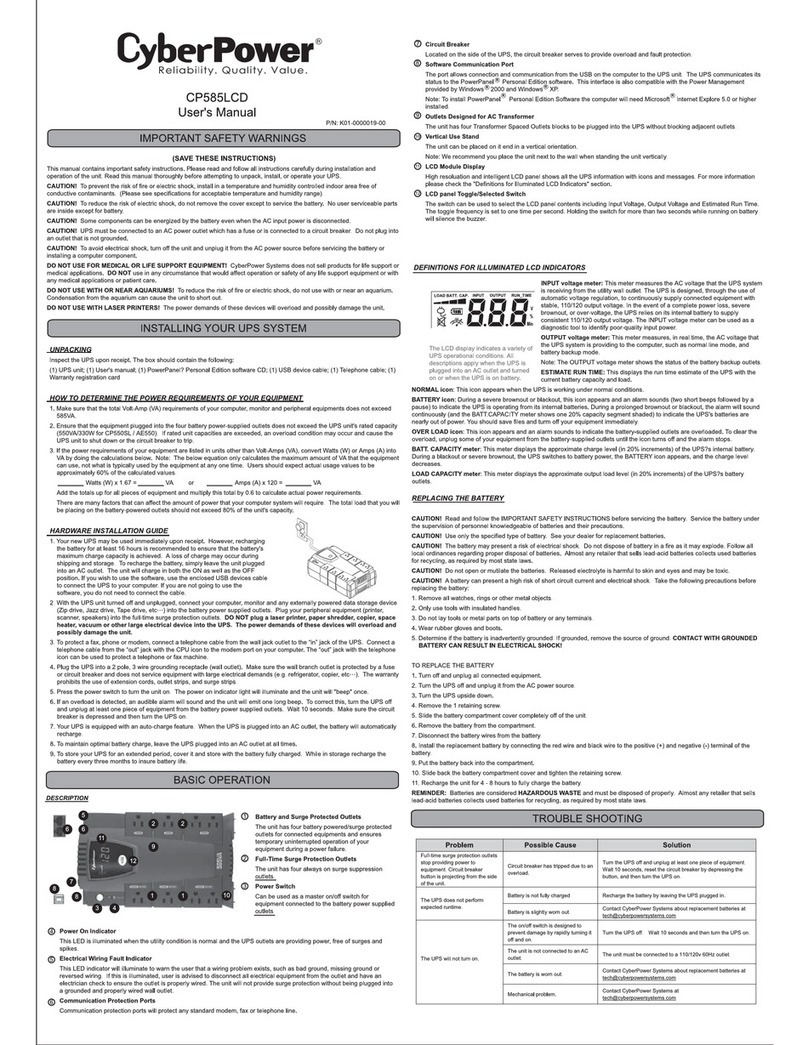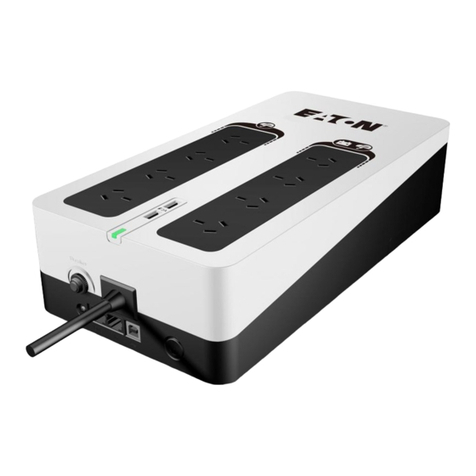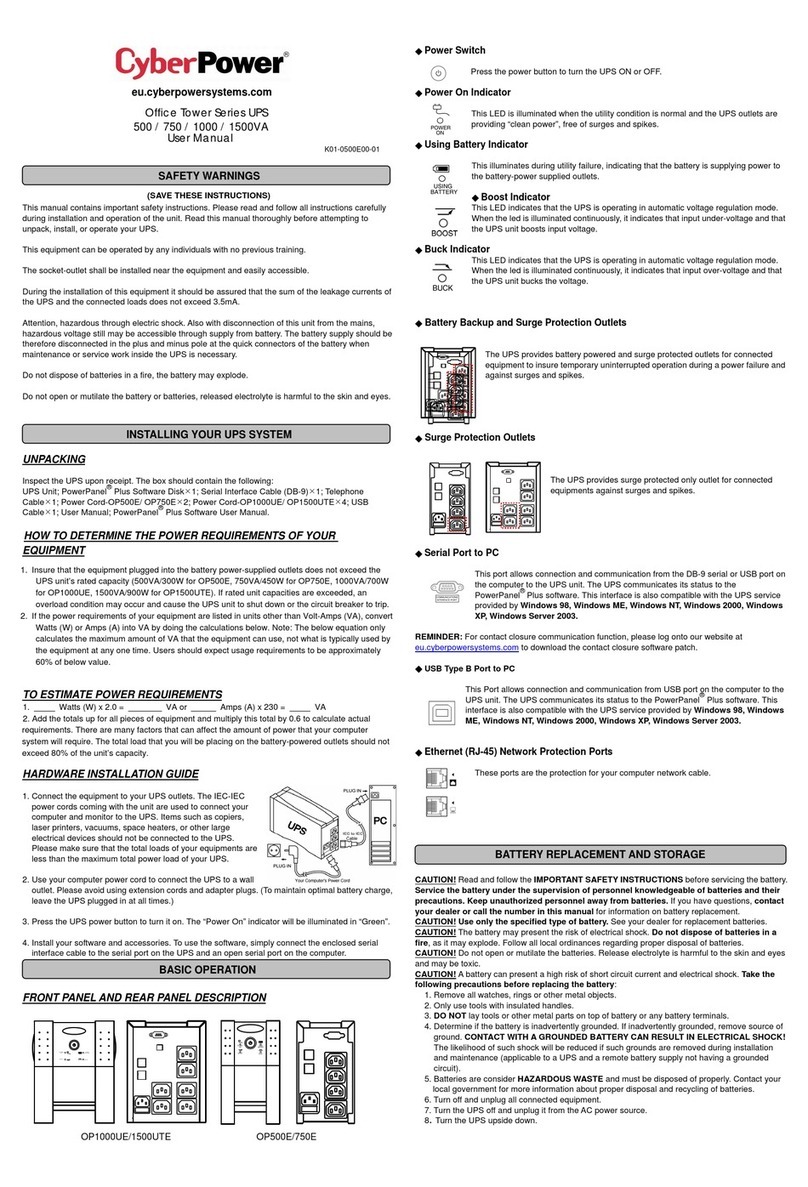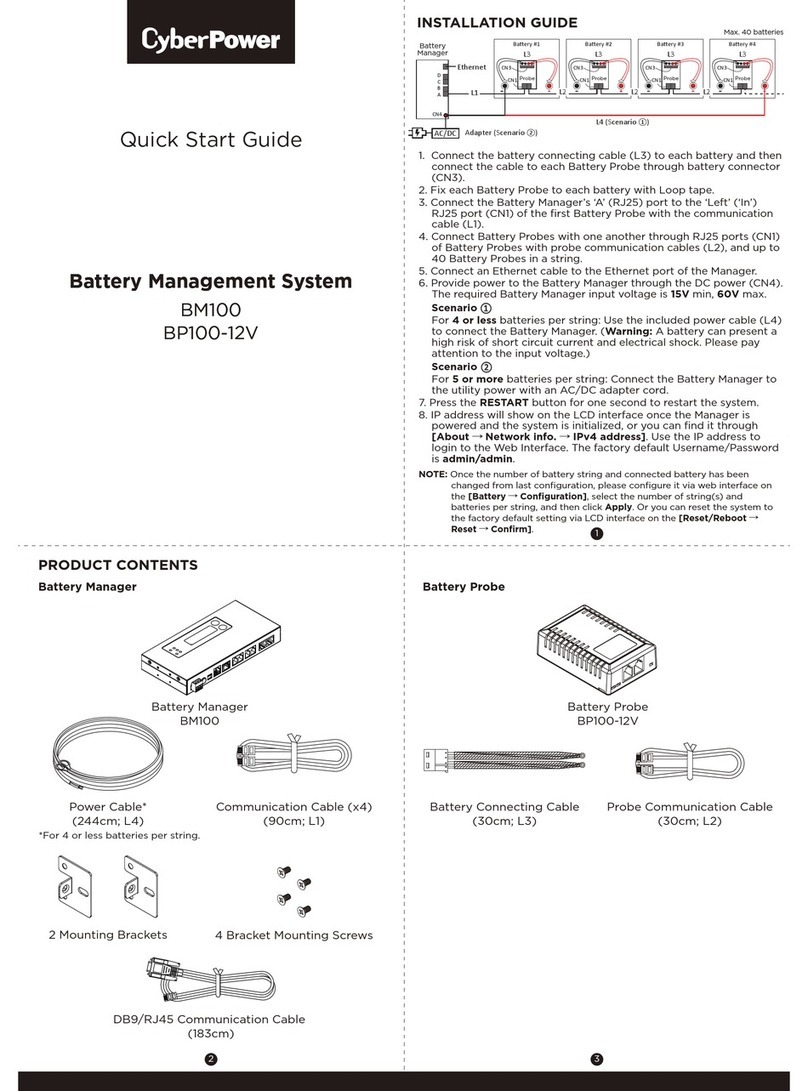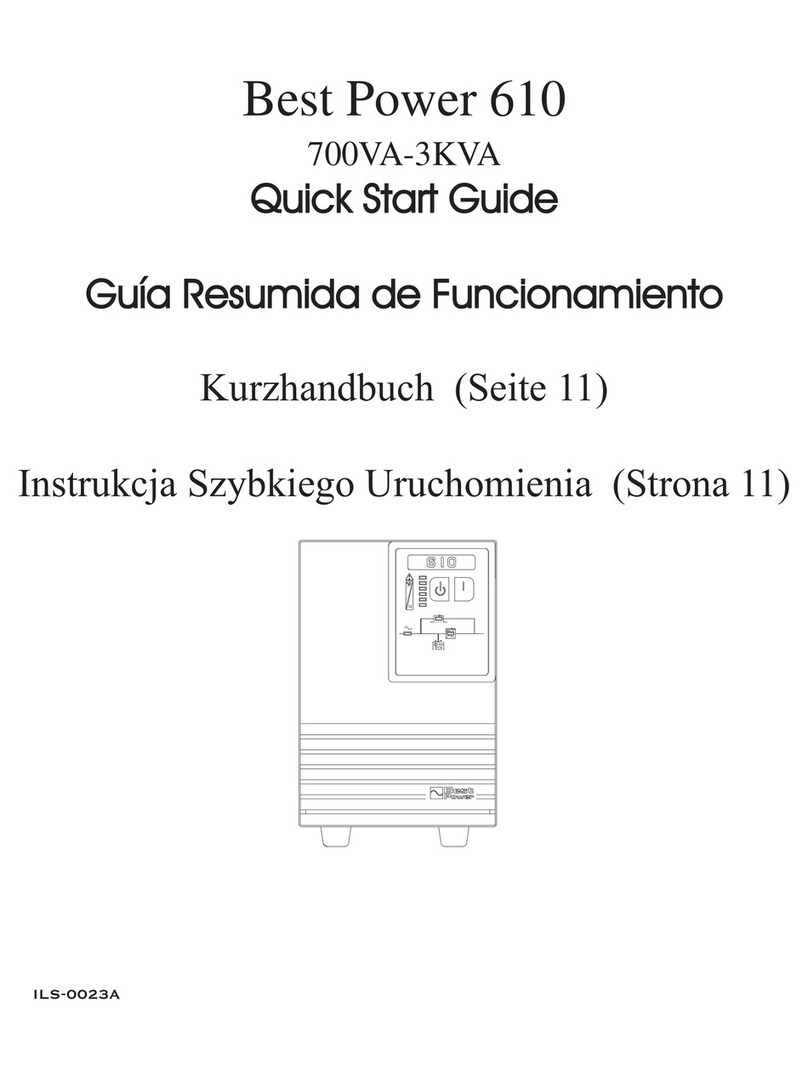
3. Please used the UPS accessories specified by SANTAK.
4. Shock Risk.
If equipment powered by UPS require any type of maintenance, it
is imperative to disconnect it from UPS before maintenance.
If input or output terminal need any maintenance or installation, it is
imperative to disconnect all the power connections of UPS and turn
UPS off.
BATTERY SAFETY
1. The service lifetime of UPS battery depends on ambient temperature,
high ambient temperature will impact the service lifetime of UPS battery.
Replace battery on regularly can help to keep UPS running efficiently
and provide backup time as expected.
2. Batteries must be maintained and replaced only by qualified person.
3. Batteries have a high short-circuited current and pose a risk of shock.
Take all precautionary measures specified below and any other
measures necessary when working with batteries:
A. remove all jewellery, wristwatches, rings and other
metal objects.
B. use only tools with insulated grips and handles.
C. Wear rubber gloves and boots.
D. Do not lay tools or metal parts on top of batteries.
E. Disconnect the charging source prior to connecting or
disconnecting battery terminals.
4. Do not attempt to dispose of batteries by burning them. It could cause
explosion.
5. Do not open or destroy batteries. Effluent electrolyte can cause injury to
the skin and eyes. It may be toxic. If cause injury by Effluent electrolyte,
use cool water for washing and go to hospital ask for help immediately.
6. Do not short the battery with metal objects, It could cause an electric
shock, fire or explosion.
